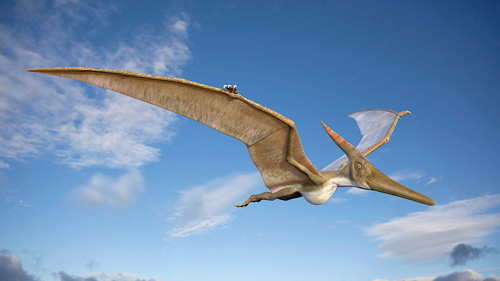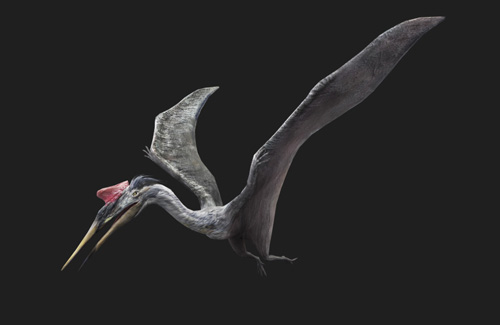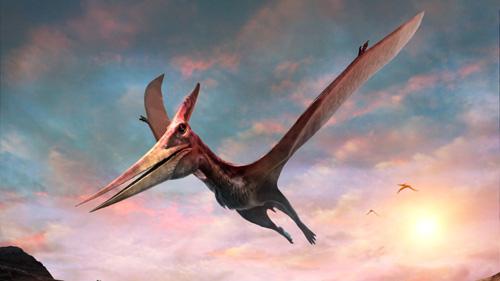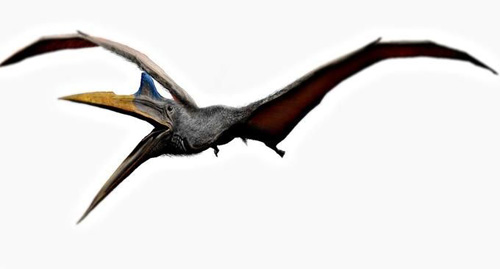A note on indulgences and pterosaurs
As well as containing unverifiable statements regarding Hell and Purgatory, this story contains two inaccuracies. Firstly, indulgences were purchased not to remove sin (which had to be forgiven), but to to reduce the amount of punishment one had to undergo for a sin. Monetary indulgences were banned in 1567, so the protagonist of story #40 must have died before then. Secondly, pterosaurs were not actually dinosaurs. They fail to earn the prestigious 'dinosaur' label because of a technicality. All dinosaurs have a hole in their hip socket and a crest on their upper arm bone; all pterosaurs do not.
Pterosaurs are an extinct clade of flying animals closely related to dinosaurs that existed between 228 and 66 million years ago. Pterosaurs are the earliest vertebrates known to have evolved powered flight. Their wings were formed by a membrane of skin, muscle, and other tissues stretching from the ankles to a dramatically lengthened fourth finger. On the ground, they walked well on all four limbs with an upright posture, standing on the hind feet. They could take off from the ground, and at least some species were able to run and wade or swim. Some groups developed elaborate head crests with sexual dimorphism. The neck is typically longer than the torso.
Pterosaurs had smooth or fluffy coats that did not resemble bird feathers. They were warm-blooded, active animals. The respiratory system had efficient unidirectional "flow-through" breathing using air sacs, which hollowed out their bones to an extreme extent. Pterosaurs spanned a wide range of adult sizes, from the very small anurognathids to the largest known flying creatures, including Quetzalcoatlus and Hatzegopteryx, which reached wingspans of at least nine metres. The combination of warm-bloodedness, a good oxygen supply and strong muscles made pterosaurs powerful and capable flyers. They reproduced via eggs.
Pterosaurs are not actually dinosaurs. They are more closely related to birds and other non-avian dinosaurs than to crocodiles or any living reptile, though they are not bird ancestors. Pterosaur bones were hollow and air-filled, like those of birds. This provided a higher muscle attachment surface for a given skeletal weight. The bone walls were often paper-thin. They had a large and keeled breastbone for flight muscles and an enlarged brain able to coordinate complex flying behaviour. Pterosaurs had a wide range of sizes, though they were generally large. The smallest species had a wingspan of around 25 centimetres. The most sizeable forms represent the largest known animals ever to fly, with wingspans of up to 10–11 metres. Standing, such giants could reach the height of a modern giraffe. It is estimated that the largest ones weighed up to 250 kilograms. Compare this to the heaviest existing flighted bird, the turkey, weighing up to 39 kg.
The tremendous power of their winged forelimbs would enable them to take off with ease. Once aloft, pterosaurs could reach speeds of up to 120 km/h and travel thousands of kilometres.
Tad Boniecki
June 2024





